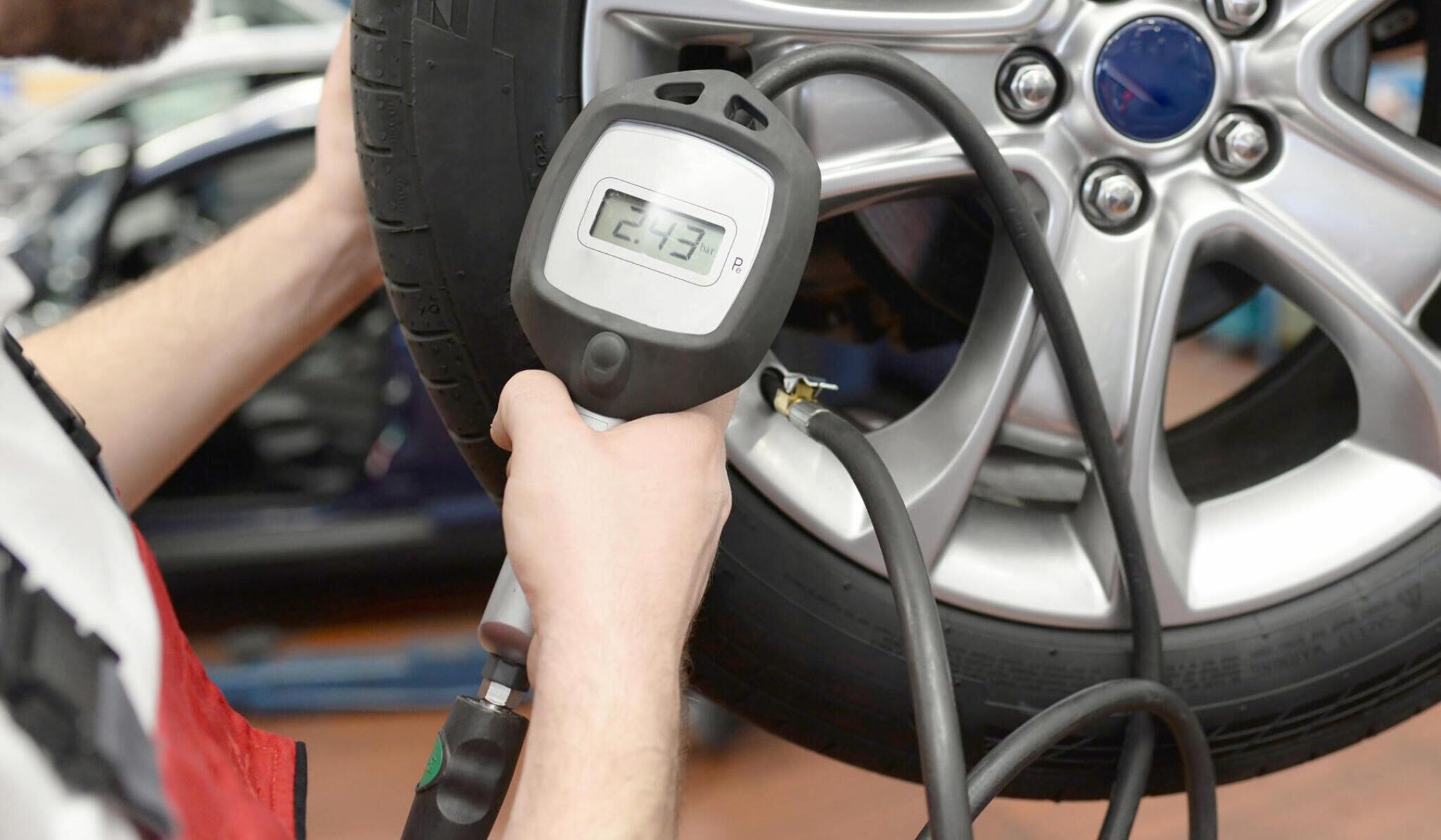Last Updated on January 30, 2025
A Comprehensive Guide to the DOT Number on Tires
Safety is paramount when driving, and tire maintenance is essential in ensuring road safety. Tires are the only point of contact between your vehicle and the road, and they play a significant role in handling, braking, and overall stability. Understanding tire safety, particularly the Department of Transportation (DOT) number on tires, is vital for every driver.
The Importance of Tire Safety
Tire safety is often overlooked, yet it’s essential for several reasons:
- Preventing Accidents: Properly maintained tires with proper tread depth and air pressure can considerably lower the chance of an accident. Tires in poor condition, such as bald or underinflated, can cause loss of vehicle control, particularly in inclement weather.
- Optimal Vehicle Performance: Good tires increase fuel efficiency, handling, and braking. They ensure that the vehicle functions as intended.
- Legal and Insurance Compliance: In many areas, driving with tires that do not satisfy particular safety criteria can result in legal consequences and may affect insurance claims in the event of an accident.
- Extended Tire Life: Regular tire maintenance can extend the life of your tires, saving money in the long run and reducing environmental impact through less frequent tire disposal.

Overview of the DOT Number
The DOT number is a unique identifier found on all tires sold in the United States and is a requirement enforced by the U.S. Department of Transportation. This number serves several vital functions:
- Traceability: The DOT number enables tire tracking, which is critical in the event of a recall. It aids manufacturers in identifying potentially defective batches of tires.
- Age Identification: The DOT number depends on the tire’s production date. This information is crucial since tires degrade with time, regardless of usage. Knowing the age of a tire can help you determine its safety and usability.
- Quality Assurance: A DOT number signifies that the tire fulfills all federal safety requirements established by the National Highway Traffic Safety Administration (NHTSA).
- Informed Decisions: For customers, the DOT number is a tool for making informed decisions when purchasing tires, ensuring that they choose items that meet safety regulations.
The Origin and Purpose of the DOT Number
The DOT number on tires is more than just a random sequence of characters. It is a code that carries important information about the tire’s origin, quality, and safety. Understanding the origin and purpose of the DOT number helps consumers and manufacturers alike maintain high standards in tire safety and performance.
Historical Background
The DOT (Department of Transportation) number on tires results from changing tire safety standards in the United States. Its origins date back to the early 1970s when the United States government began taking a more active role in car safety regulation.
- Early Regulation: In response to increased road accidents and growing public concern about vehicle safety, the United States Congress established the National Traffic and Motor Vehicle Safety Act in 1966. This act established a set of laws governing automobile safety.
- The Beginning of Code Use: The DOT number was created for these requirements. It aimed to ensure that all tires sold in the United States meet specific safety requirements.
- Response to Safety Concerns: The introduction of the DOT number also addressed issues related to tire failures and the need for a system to encourage recalls and track tire quality.
Regulatory Framework and Compliance
The DOT number is more than a guideline; it is a legal requirement under US lawU.S.regulated by the Department of Transportation and the National Highway Traffic Safety Administration.
- Legal Requirements: All tires sold in the United States must have a DOT number, which shows that they meet the Federal Motor Vehicle Safety Standards.
- Compliance Monitoring: If a tire fails to satisfy the necessary standards, the NHTSA may issue a recall or a fine.
- International Impact: While the DOT number is a US requirement, it has international consequences because tires manufactured outside the US carry it to be sold in the American market.
Significance in Tire Manufacturing
The DOT number is more than a regulatory instrument; it also plays an essential function in tire manufacture.
- Quality Control: Manufacturers use the DOT number as a quality assurance symbol. It informs consumers that the tire has undergone strict safety tests.
- Traceability: Each DOT number is unique to a batch of tires. This allows us to trace the tires to their production data during a recall or quality inspection.
- Consumer Trust: The DOT number symbolizes dependability and safety for customers. It ensures that the product they purchase is fit for purpose and meets set safety standards.
Deciphering the DOT Code: A Step-by-Step Guide
Understanding your tire’s DOT (Department of Transportation) code is essential for ensuring tire safety and making informed tire maintenance and replacement decisions. This guide thoroughly explains how to locate and read the DOT code on your tires.
Locating the DOT Number on Your Tire
The first step in understanding the DOT code is to locate it on the tire. The DOT number is usually located on the sidewall of the tire.
- Sidewall Inspection: Look for letters and numbers that start with “DOT.” This code is usually found on one side of the tire but can appear on both.
- Positioning: The DOT code often appears in the bottom sidewall area around the tire’s rim. It could be on the inside sidewall, so look underneath your vehicle or move the steering wheel completely to reveal the inner side.
- Visibility: The DOT code may be slightly raised or embossed on some tires, making it easier to recognize.
Breaking Down the Code: Meaning of Each Segment
The DOT code is not just a random string of characters; each segment has a specific meaning.
- Manufacturer’s Identification: The first two or three letters or numbers represent the manufacturing plant where the tire was produced.
- Tire Size Code: This portion indicates the tire size based on the manufacturer’s specifications.
- Manufacturer’s Unique Code: This may vary in length. The manufacturer uses it to encode information such as the type of tire, its intended use, and other specific characteristics.
- Production Date: The last four digits represent the week and year the tire was manufactured. For example, “3219” would indicate the tire was made in the 32nd week of 2019.
Case Studies: Real-life Examples
To illustrate how the DOT code works in practice, let’s consider a couple of real-life examples:
- Example 1: DOT 6BHL LMLR 2516
- 6BHL: Manufacturer’s plant code
- LMLR: Tire size and manufacturer’s unique code
- 2516: Manufactured during the 25th week of 2016
- Example 2: DOT A9RK 4DEP 1217
- A9RK: Plant code where the tire was made
- 4DEP: Tire size and unique characteristics
- 1217: Production date, indicating the 12th week of 2017
These examples show how the DOT code can provide important information about your tire’s origin, type, and age, assisting with safety checks and maintenance decisions.
The DOT code helps determine your tire’s manufacture and age. Drivers who understand how to find and understand this code can make better decisions about tire safety, maintenance, and when to replace tires. This knowledge is essential for vehicle safety and enhances vehicle performance and lifetime.
How the DOT Number Impacts You as a Driver
The Department of Transportation (DOT) number on your tires is more than just a regulatory requirement; it impacts driving and vehicle maintenance, and understanding how this number affects a driver is crucial for safety, legal compliance, and practical vehicle upkeep.
Safety Implications
The DOT number on your tires has significant safety implications. It provides crucial information about tire age, recalls, and quality assurance, ensuring you drive confidently and reducing the risk of accidents.
- Age and Safety: The DOT number indicates the age of your tires. Tires degrade with time, even if they do not appear worn. Tires over six years old are more likely to fail, which could result in an accident. Knowing the age of your tires, as indicated by their DOT number, can help you make more informed judgments about whether to replace them.
- Recalls and Defects: In the event of a recall or known fault, the DOT number allows you to determine whether your tires are impacted immediately. Driving with bad tires heavily increases the likelihood of an accident.
- Quality Assurance: The DOT number signifies that the tire has met strict safety requirements set by the United States Department of Transportation, assuring you of its overall safety quality.

Legal and Insurance Considerations
Understanding the legal and insurance elements of the DOT number is essential for safe driving. Compliance with DOT requirements helps avoid legal penalties; however, tire condition and DOT number visibility might impact insurance claims.
- Regulatory Compliance: Driving with tires that do not meet DOT regulations may result in legal penalties, including fines and tickets. The DOT number assures that your tires meet safety standards.
- Insurance Claims: In the event of an accident, insurance companies may examine the condition of your vehicle’s tires. Tires that are too old or do not have a visible DOT number can affect the outcome of an insurance claim, perhaps resulting in a lower payment or claim denial.
Role in Tire Maintenance and Replacement
The DOT number is essential for proper tire maintenance and replacement. It lets you make informed decisions about tire age and condition, maintain replacement cycles, and choose new, reliable tires. Understanding this number enables drivers to concentrate on road safety.
- Informed Maintenance Decisions: Regular tire inspections are essential for vehicle safety. The DOT number determines the age and condition of the tires and instructs you on when to seek professional inspection or replacement.
- Replacement Cycles: The DOT number helps you maintain a regular tire replacement cycle. Knowing the actual age of your tires allows you to plan for replacements at regular intervals, ensuring that your vehicle is always supplied with safe, durable tires.
- Choosing New Tires: The DOT number might be a helpful reference when purchasing new tires. You can check the DOT number to verify you’re buying the most recent tires, avoiding those that have been in storage for an extended period.
Advanced Insights: Beyond the Basics
The DOT number on a tire is more than just a regulatory compliance symbol. It is a gateway to understanding vital components of tire safety and technology. Exploring these advanced insights can considerably improve a driver’s understanding and approach to vehicle maintenance and safety.
Understanding Tire Age and Its Importance
Tire age is essential for tire safety, regardless of tread wear. This blog explains the importance of tire age, how to determine it using the DOT number, and the risks associated with aging tires.
- Age vs. Wear: tire age is essential in tire safety, regardless of tread wear. Rubber compounds in tires degrade with time, resulting in decreased performance and an increased risk of tire failure. This degradation happens irrespective of tread depth or visible condition.
- Determining age: The DOT number contains a four-digit identification indicating the week and year of manufacture. For example, a code ending in “2519” means the tire was manufactured in the 25th week of 2019. Understanding this helps determine whether a tire is too old for safe use.
- Age-Related Risks: As tires age, they become more prone to dry rot, sidewall cracking, and structural failure. These dangers rise dramatically after five to six years, independent of tread depth.
Recalls and the DOT Number: What You Need to Know
The DOT number is essential for detecting and responding to tire recalls. This section explains its role in tracking recalls, how consumers can determine if their tires are affected, and how it holds manufacturers accountable for tire safety.
- Tracking Recalls: The DOT number is essential for identifying tires involved in manufacturer recalls. The unique code traces specific batches of tires with flaws or safety issues.
- Responding to Recalls: In a recall, the DOT number allows customers to quickly assess whether their tires are affected and require replacement or inspection. This proactive approach is essential for ensuring vehicle safety.
- Manufacturer Accountability: The DOT number provides traceability, keeping producers accountable for the quality and safety of their tires and promoting increased standards in tire production.
Technological Advances and Future Prospects
Explore the future of tire technology and its potential impact on the DOT number. From innovative tire technologies to sustainability and evolving regulations, this segment discusses the exciting prospects and innovations in the tire industry.
- Smart Tire Technologies: Emerging technologies enable the integration of sensors within tires, providing real-time data on tire health, pressure, temperature, and Wear. These advancements could lead to more dynamic and interactive DOT numbers and tire tracking uses.
- Sustainability and Innovation: The tire industry continually explores new materials and manufacturing processes to extend tire life, reduce environmental impact, and improve safety. Future DOT codes may include information on these innovations.
- Regulatory Evolution: As tire technology advances, so too will regulatory standards. The DOT number will continue to evolve to reflect these changes, ensuring that tire safety remains a top priority in an ever-evolving automotive landscape.
Practical Tips for Every Car Owner
Understanding and using the DOT (Department of Transportation) number on tires can be a game changer for vehicle safety and performance. Here are some practical recommendations to help you manage tire-related concerns.
Regular tire inspections and DOT Numbers
Learn the importance of regularly inspecting the DOT number on your tires. This blog shows how checking the age of your tires, staying up-to-date on recalls, and monitoring Wear and tear may improve safety and longevity.
- Check tire Age: Inspect your tires’ DOT numbers regularly to ascertain their age. Even if the tread appears in good condition, tires older than six years should be checked more frequently and possibly replaced as the danger of failure grows.
- Check for Recalls: Use the DOT number to stay updated on any tire recalls or safety notices. You can search the manufacturer’s website or a national database for tire recalls.
- Monitor Wear and Tear: Regular inspections should involve searching for uneven Wear, which can suggest alignment concerns, as well as any evidence of damage, such as cracks or bulges, particularly on older tires.
Choosing the Right Tires: How the DOT Number Can Help
Discover how the DOT number is necessary when selecting the right tires for your vehicle. Whether checking manufacturing dates for freshness, ensuring quality assurance, or matching tires to your car and usage, this segment guides you in making informed tire choices.
- Check the Manufacturing Date: When buying new tires, use the DOT number to ensure you obtain the freshest. Older tires, even if unused, may have begun to degrade after being stored for an extended period.
- Quality Assurance: Choose tires with DOT numbers, ensuring they exceed particular safety criteria. This is especially crucial when buying lesser-known brands of tires from countries with varying safety requirements.
- Match Tires to Vehicle and Use: Ensure that the tire type and specifications listed in the DOT code are appropriate for your vehicle and regular driving situations.
Troubleshooting Common Tire Issues Using the DOT Code
This section explains how the DOT number can be a troubleshooting tool. Learn how to evaluate wear patterns, understand tire failures, and seek professional help based on the DOT code to address common tire-related problems successfully.
- Identify Patterns in Wear: If you’re having regular tire problems, see if your tires are from the same batch (using the DOT number). A consistent problem across tires from the same set could suggest a manufacturing defect.
- Understand tire Failures: The DOT number can reveal important details about a tire failure. For example, if a tire fails prematurely, verifying the production date can assist in identifying whether age is a contributing factor.
Conclusion & Recommendations
As we conclude our detailed introduction to tire safety and the significance of the DOT number, let us review the most critical points. This section distills much information into actionable knowledge that can be used regularly to ensure maximum tire safety.
Following the primary findings, we present practical recommendations. These recommendations are intended to provide car owners with ongoing learning opportunities and proactive practices in tire care and safety, resulting in a safer and more efficient driving experience.
Key Takeaways:
As we wrap up our in-depth look into tire safety and the significance of the DOT number, here are some significant takeaways:
- Safety First: The fundamental aim of your tires’ DOT number is to assure their safety. It is an essential instrument for determining the age and condition of your tires, which are vital variables in road safety.
- Informed Decisions: Understanding the DOT number enables you, as a car owner, to make informed decisions about tire care and replacement, improving vehicle performance, and extending the vehicle’s lifespan.
- Proactive Approach: Regular inspections and knowledge of tire recalls are vital measures. The DOT number is your go-to resource for keeping up with tire safety.
- Quality Assurance: The DOT number is a mark of compliance with safety standards when buying new tires. Always check this number to ensure you’re buying high-quality, safe tires.
- Awareness and Education: It is important to keep yourself informed of the latest developments in tire technology and safety standards. This ongoing education will help you maintain your vehicle’s tires at their optimal level.
Continuing Your Education on Tire Safety
Tire safety is an ongoing journey. Here are a few recommendations for furthering your education and staying informed:
- Stay Updated: Follow automotive safety blogs, subscribe to newsletters from tire manufacturers, and join forums dedicated to vehicle maintenance.
- Attend Workshops: Participate in local workshops or webinars on tire safety and maintenance. These can offer hands-on experience and expert advice.
- Consult Professionals: Don’t hesitate to consult tire professionals for advice tailored to your vehicle and driving conditions.
- Regular Check-ups: Include tire inspections in your routine vehicle maintenance schedule. This includes checking tire pressure, tread depth, and overall condition.
As you deepen your understanding of tire safety, remember that choosing the right tires is as important as maintaining them. For those looking to purchase new tires or seeking professional advice, Tires Easy offers a comprehensive range of high-quality tires suitable for various vehicles and driving conditions. Our easy-to-navigate website simplifies the tire buying process, ensuring you find the perfect match for your car.
Whether you’re a seasoned driver or a new car owner, understanding the intricacies of tire safety is invaluable. At Tires Easy, we’re committed to helping you make the best choices for your vehicle, ensuring safety, performance, and peace of mind on every journey.
FAQs
Where can I find the DOT Number on my tires?
The DOT number is usually embossed on the sidewall of the tire. It’s often found near the rim, printed in a small, raised font.
What does the DOT number on a tire mean?
The DOT number on a tire signifies that it complies with all safety standards established by the U.S. Department of Transportation. It also provides vital information like the tire’s manufacturing location, size, and date.
How do you decode a tire code?
Look at the numbers and letters on the sidewall to decode a tire code. This includes the tire’s width, aspect ratio, construction type, the wheel diameter it fits, load index, and speed rating, in addition to the DOT number, which indicates manufacturing details.
What do the dots on tires mean?
The colored dots on new tires are quality control markers used by manufacturers. They indicate the lightest point of the tire or the highest point of radial runout. These dots assist technicians in balancing and correctly mounting the tire on a wheel.
How do you read a DOT tire number?
To read a DOT tire number, locate the code on the tire sidewall, starting with ‘DOT.’ The last four digits reveal the manufacturing date (week and year). For instance, “2720” means the tire was made in the 27th week of 2020. The earlier characters denote the manufacturing plant and other specifications.
What is a DOT code on a tire?
A DOT code on a tire is a sequence of characters indicating that the tire meets all safety standards the U.S. Department of Transportation sets. It provides information about the tire’s manufacturing location, date, size, and other characteristics.
-
Automotive Specialist
-
Proofreader
-
Writer









 English
English Français
Français Español
Español